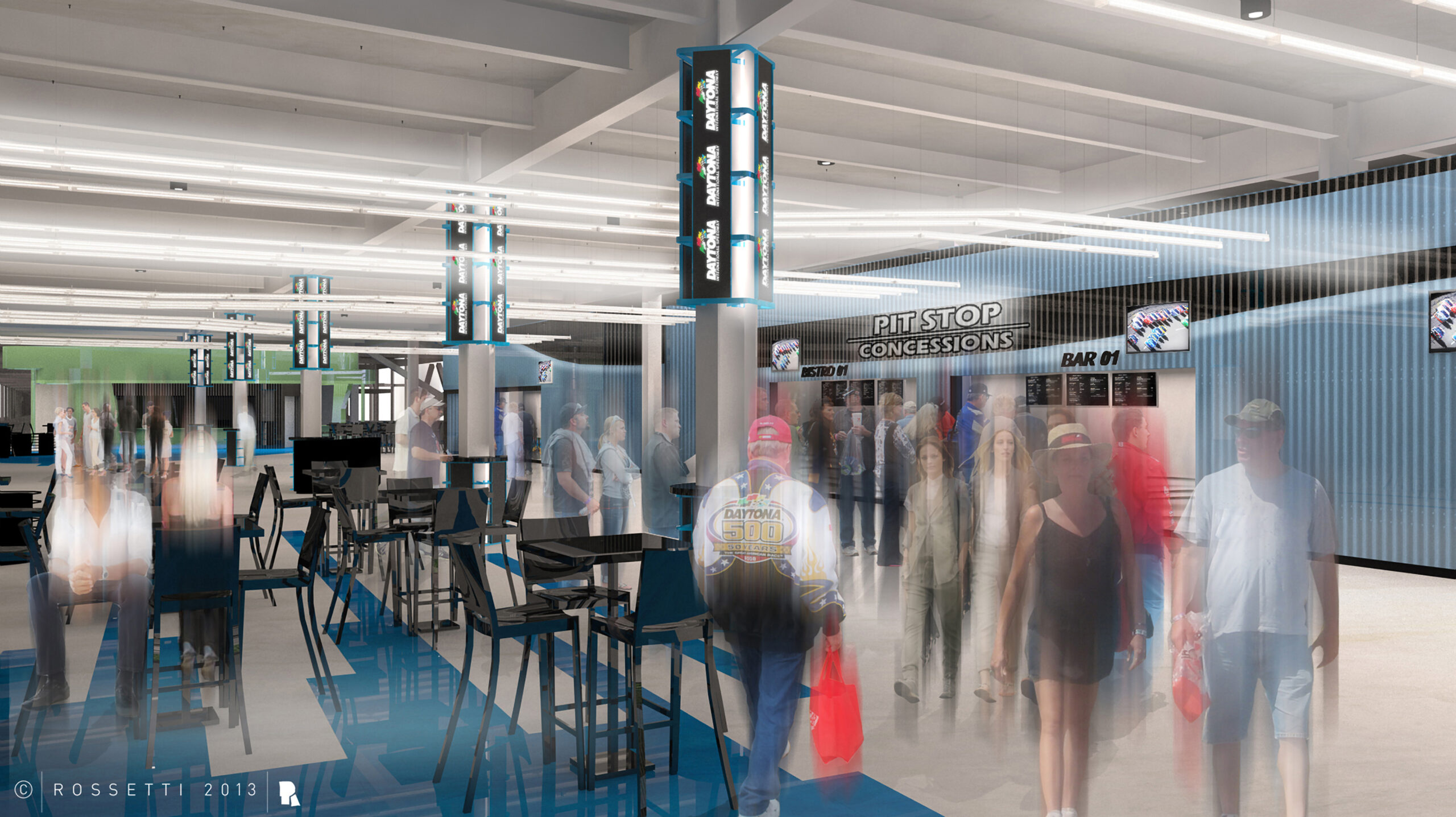Foodservice is accelerating in the fast lane at Daytona International Speedway. The Florida raceway, home of the iconic Daytona 500 of the NASCAR Sprint Cup, will undergo a $400 million reimaging, with added focus on updating and expanding concession options.
“As a company that owns 13 racetracks, we’re always looking at how we rank compared to other sports venues,” says Joie Chitwood, president of Daytona International Speedway. “So we did an audit of all 13 racetracks and with Daytona being 50-plus years old, we confirmed there were some deficiencies we need to deal with.”
Chitwood and his team are addressing those deficiencies through a full-scale upgrade, dubbed Daytona Rising, which broke ground in July 2013 and will be complete by January 2016. The finished venue will offer 101,000 permanent and more comfortable seats, twice as many restrooms, and three times as many concession stands. Chitwood says the Speedway’s foodservice partner, Americrown, will have a seat at the planning table, as ensuring the design includes all the amenities a fast-paced, limited-service food operation requires. The key to a successful food program at the new Daytona will be variety, he adds.
“We let fans bring their own coolers in, and they can bring in their own food and drinks,” Chitwood says. “They can pack their cooler with soda pop and sandwiches, and they want something different at the concession stand.”
Those differentiated offerings could include branded food products as well as fast-food classics Floridians would be familiar with, Chitwood adds. The new concession stands will also be spread out throughout the venue’s grandstand. The current setup at Daytona requires guests to travel to the bottom to access food vendors and other amenities. Vertical transportation, a guest’s ability to travel up and down the grandstand, will be a central focus of the revamp—getting that piece of the puzzle right, along with attractive food offerings, will be the crux of Daytona succeeding in its ultimate goal.
“Our goal with this project is to become the first and only motorsports stadium,” Chitwood says. “We operate the venue about 250 days a year, but when you look at the spectator side of it, it’s probably closer to three weeks of activity versus rentals and other elements. We’re looking at adding other events to our calendar, whether it’s concerts or other types of sporting events.”
By Tamara Omazic


